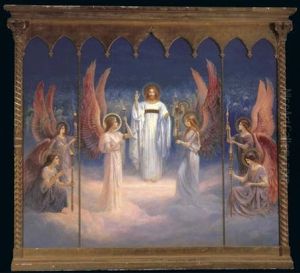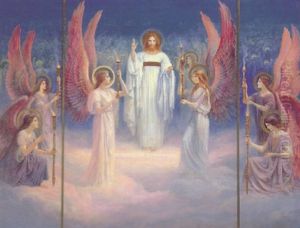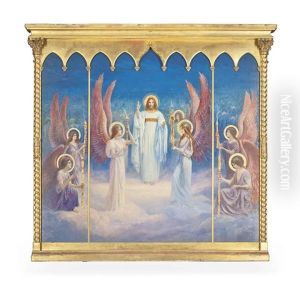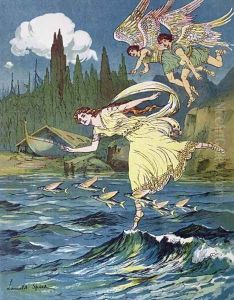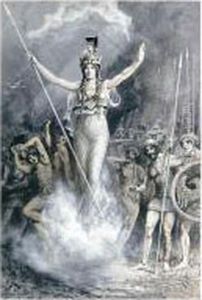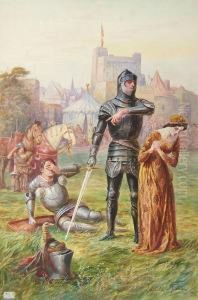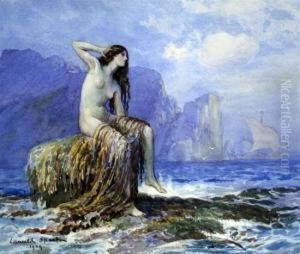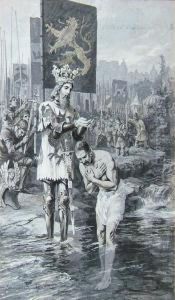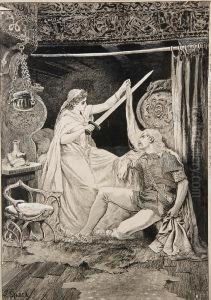Lancelot Speed Paintings
Lancelot Speed was a notable British illustrator, born in 1860 in the United Kingdom. He is best remembered for his work in the realm of fantasy literature, where his dynamic and imaginative illustrations brought to life the worlds of fairy tales, adventure stories, and historical novels. Speed's career was most prolific during the late 19th and early 20th centuries, a time when the arts and crafts movement was flourishing in Britain, and there was a high demand for illustrated books.
Speed's illustrations were characterized by their intricate detail, vivid imagination, and the ability to evoke the fantastical elements of the narratives they accompanied. He had a particular talent for capturing the essence of the story through his artwork, making him a sought-after illustrator for many of the leading authors of his time. Among his most famous works were the illustrations for Andrew Lang's Fairy Books, a series of twelve collections of fairy tales from around the world, which remain popular to this day. He also illustrated editions of classic works such as 'The Pilgrim's Progress' by John Bunyan and 'The Mabinogion', a collection of medieval Welsh tales.
In addition to his book illustrations, Lancelot Speed was involved in the early film industry, contributing his artistic talents to some of the first silent films. His ability to create compelling visual narratives made him a pioneer in this new medium, where he explored the possibilities of storytelling through visual imagery without the need for spoken dialogue. Speed's contributions to both the literary and film worlds reflect his versatile talent and his ability to adapt to new forms of media, making him an important figure in the transition from traditional illustration to the emerging art forms of the 20th century.
Lancelot Speed's legacy is that of a visionary artist whose work bridged the gap between the Victorian and Edwardian eras and the modern age. His illustrations continue to enchant readers and art lovers, offering a glimpse into the rich imagination and artistic skill of one of Britain's most memorable illustrators. He passed away in 1931, leaving behind a body of work that continues to inspire and captivate audiences around the world.
